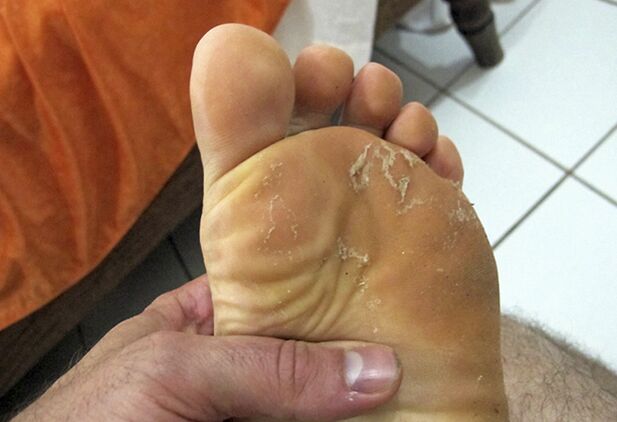
Feat fungi are a common disease belonging to the skin disease group that develops due to activation of pathogenic microorganisms.
Mycoses' pathogenic drugs live in plants and soil, inside the body, inside the animal and retain their lives, wearing infected shoes or clothes, so absolutely everyone can get a fungal infection.
What is mycelial disease in the foot?
Foot fungi are diseases caused by pathogenic microscopic fungi, which are lesions in the skin between the second child, and infections are further spread to healthy areas.
This pathology can be manifested at any age, but this disease is diagnosed especially in older people and in people with weak immunity.
About 50 naturally occurring mushrooms are potentially dangerous.Under the influence of favorable conditions, they are all capable of parasitizing in the human body and in the body, triggering the development of systemic and local fungal pathology.
Important!
Fungal lesions in the feet can cause changes in the skin structure and the nails are removed from the nails without timely treatment.
MKB Code 10
According to ICD-10, Mikoz Stop has code B35.3.
Various fungal diseases on the skin
Experts distinguish several major types of sole membranous diseases based on pathogens.Each variety has its own characteristicsAnd there are many unpleasant symptoms.
Rubrofitius
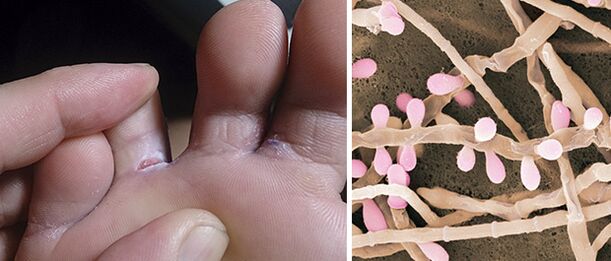
The cause istrichophyte rubrum fungus.The clinical manifestations of pathology begin with the fact that the disease covers the feet and folds between fingers, but, in this process, lymphocytes of foreign body protein structures spread sexually through the body's infection.
Candida disease in parking
Developed by penetrating the human bodyCandida fungi.Candidiasis that stops begins with lesions in the interlayer space and nails.Meanwhile, the area of the nail roller becomes plurimetric and edema, and the patient may be disturbed by the injury belt and the pulsational pain of severe itching.
Streptomycesiasis
Damage to nail plates caused by skin plants, fungiA candidate or mold.The fungi are undoubtedly characterized by conditions of existence and are highly resistant to drugs, so in advanced forms, the disease is difficult to treat.
Complex (cross-construction) form
The most typical form of mycelium is determined by damage to the folds of the bismuth without any signs of pathological processes on the feet.As the patient develops, cracks, peeling, erythema and impregnation appear.In the future, any bacterial infection can develop in the context of the disease.
Scaly - Hybrid
Its characteristic is that its feet are damaged simultaneously.The disease takes place in the role of severe skin peeling and skin-infected areas and the occurrence of deep cracks in the affected areas.Itching is insignificant or non-existent.
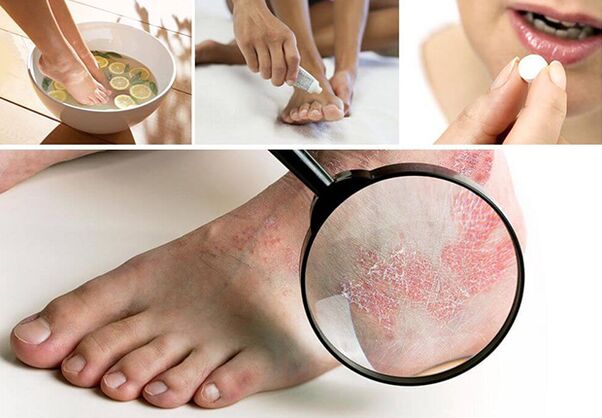
dyshidrotic form
After the infection penetrates into the body, many bubbles emit rough skin on the surface, congestion and swelling increase, which makes the tumor form of the disease similar to eczema.After rupture, bubbles form erosion zonesOn the heel or on the foot.
The form of erasing
Various mycelial diseases have minimal clinical manifestations in the form of inconspicuous microcracks in skin blocks and peeling on bowl bones.The patient was not feeling discomfort, which is why pathological treatment was delayed for a long time.
Madu's feet
For a long time, deep mucus bacteria have mainly affected the feet.The disease begins with focal inflammation in subcutaneous tissue and gradually spreads to soft tissue, viscera and bones.
In the initial stage, pathology did not show, but then a seal with purulent content and specific odor was formed under the infected feet.The surface of the skin becomes disfigured and resembles the shell of a turtle.
The stage of stopping mycotic disease
The incubation period for stopping mycotic diseases is 3-14 days, after which the infected person shows the first sign of infection.Dermatologists draw the attention of the patient, i.e. the disease has multiple developmental stages.
The original
Patients may not suspect infection becauseThe stage of mycotic disease is considered to be ordinary dry skin.Cracks and redness appear on the feet.There is mild swelling and itching.
Average
In the intermediate stage, fungi were found without difficulty as large pink spots appeared on the skin, and the peeling area increased and itch increased.
Neglected
The fungus uses both the rock formation and the nail plate to affect the feet.Nails become fragile, start to collapse and sprinkle water.The skin is rough, compacted, covered with deep cracks and separated by large layers.
Causes and symptoms of fungal damage
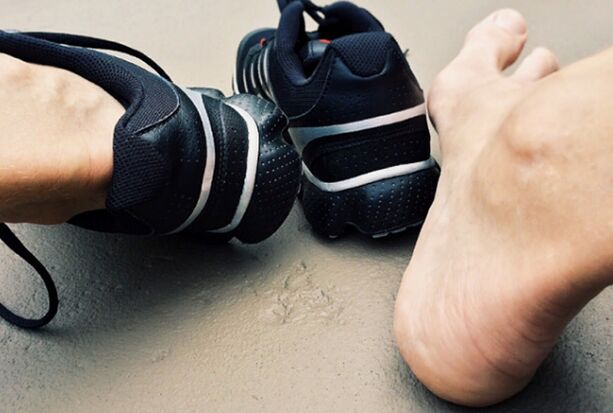
If a person is completely healthy, after direct contact with the source or carrier of the infection, his personal matter or home object may not have an infection.However, in the presence of any disease in the body, the risk of infection is high.
They become outrageous factors:
- Weakening of protection function;
- Increase sweating or dry skin;
- long-term medication;
- Not complying with hygiene rules;
- Violation of the circulation system;
- There is microamino acid on the skin;
- Too much weight;
- Deformed feet;
- Wear tight shoes.
Depending on the location of inflammation and the form of disease, fungal infections may be accompanied by the following symptoms:
- Bright or severe redness of the skin at the lesions;
- itching and burning;
- Skin peeling;
- Change the color of your nails;
- The appearance of small cracks;
- load and thickening of the foot skin;
- bubble rash;
- Unpleasant smell.
diagnosis
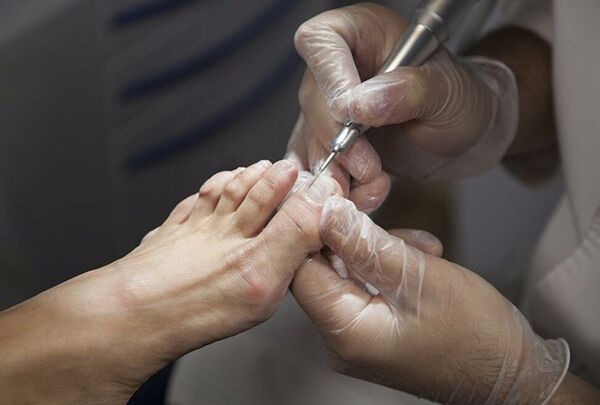
Mycologists and dermatologists have diagnosed fungal diseases in the foot and should be contacted immediately after one or more pathological symptoms develop.
Experts will be able to identify the presence of infection during the initial examination, but without other laboratory tests, the type of pathogen cannot be established.
Determining the type of fungi is done using the following methods:
- General and biochemical blood tests;
- Scrape from affected areas of the skin;
- Material collected for seeding of nutrient culture medium;
- Skin biopsy;
- A special test to confirm the presence of an infection in the body.
Based on the results obtainedDoctors diagnose and prescribe treatmentTargeted to eliminate symptoms of fungal infection and outcomes.
General principles for treating diseases with feet and fingers (little fingers)
The treatment of the outcome is performed with an effective drug that can be prescribed only by the attending physician.In most cases, patients are prescribed:
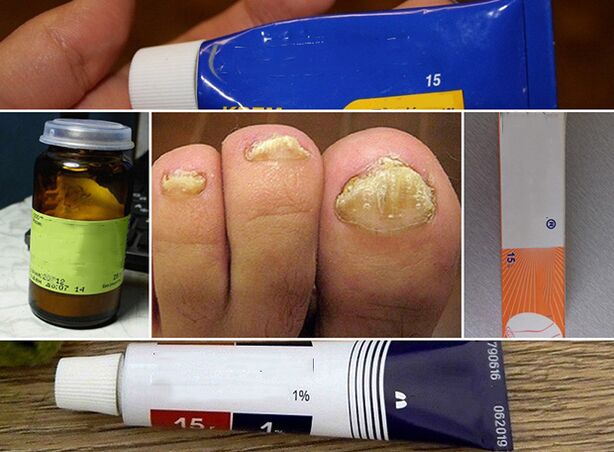
- Antifungal agents for internal and external uses;
- Anti-mixed bacterial medicine;
- corticosteroids;
- antihistamines;
- Multidegenerine complex.
Important!
In the early stages of the disease, alternative medications can be used for treatment.Many of them help get rid of the problem quickly, but in some cases, they can cause allergic reactions.
What are the dangers for fungal diseases on the soles?
If a patient refuses treatment or ignores the symptoms of the disease after a moxa disease is diagnosed, his condition will worsen over time and the symptoms will become more obvious.Apart from,Lack of treatment threatens complications.Among them:
- The infection spreads to large areas of the skin;
- Development of physical allergies;
- annex secondary infection;
- Complications of related diseases.
Important!
Continuous physical and aesthetic discomfort can lead to psychological problems.
Can mycelium on the feet be transferred to other parts of the body?
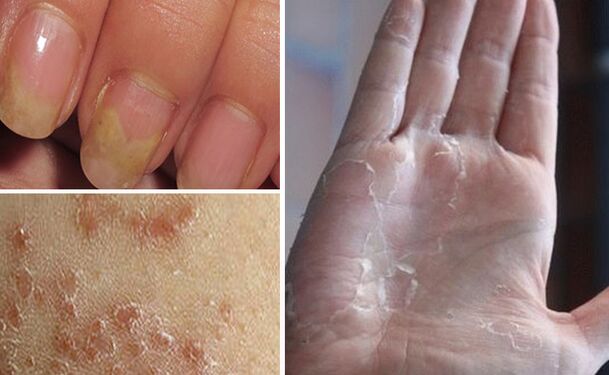
Fungal diseases do not pose special dangers to human life, but if no personal hygiene rules are observed, infections can spread to other parts of the body, causing a large focus of damage.
Patients can also pay attention to the characteristic symptoms of patients in the later stages of the development of the pathological process, when they become on the skin.The pink shadowed round rash is obviousOr blisters with transparent content.
Prevent disease
To prevent infection with mycotic diseases, it is not sufficient to rule out any contact with a possible source of fungal infection.In addition, information is at least communication with disease carriers and their personal matters, and preventive measures should also be directed at:
- Comply with personal hygiene;
- Treat chronic diseases;
- Maintain a healthy lifestyle;
- Strengthen immunity.
Foot fungi not only poses danger to infected peopleTake all possible measures to mitigateFrom the disease.
To avoid complications, it is important to contact your dermatologist promptly for diagnostic measures and to treat correctly with medication prescriptions.

























